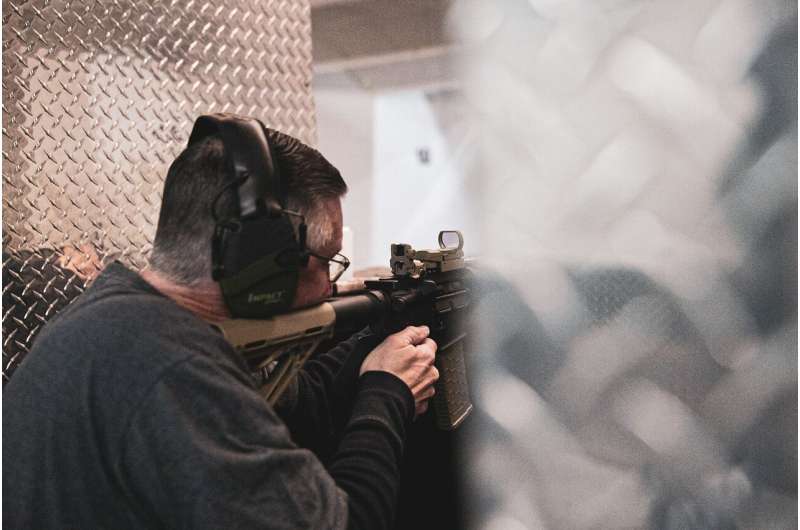This article has been reviewed according to Science X's editorial process and policies. Editors have highlighted the following attributes while ensuring the content's credibility:
fact-checked
peer-reviewed publication
trusted source
proofread
Democrats, urban dwellers, and 30-40-year-olds more likely to purchase first firearms during the pandemic: Study

Firearm sales increased to approximately 2.5 million in March 2020, an estimated 85% increase compared to March 2019. Firearm-related injuries and deaths also increased during the pandemic. What drove people to purchase firearms (whether a previous firearm owner or not) in response to the pandemic had not been previously studied at the time of the research.
A new survey conducted across the United States led by Professor in George Mason University's College of Public Health Amira Roess and faculty in the Department of Psychology, Leah Adams and Keith Renshaw, and student investigator Laura Henderson, shed new light on the changing demographic of firearm purchasers in response to the pandemic.
The survey found that younger individuals (ages 35-40) were more likely to report purchasing a firearm for the first time due to the pandemic, as were individuals living in urban areas. They were also more likely to be Democrats, which had not previously been reported. Prior to the pandemic, American firearm owners were more likely to be male and 65 years and older, live in a rural setting, and be Republican.
"Understanding the changing demographic of who is purchasing firearms can prepare public health, law enforcement, and other responders for a possible surge in firearm-related societal impacts," said Roess.
"Our findings suggest that health education interventions that promote secure firearm storage are needed for new firearm owners and for firearm owners who live with children and others. This is a critical need especially given the reality that the United States does not have policies, nor will likely have any in the near future, to effectively reduce firearm-related violence, morbidity, and mortality."
The survey found that Americans who purchased firearms during the pandemic, regardless of prior ownership, were more likely to report stockpiling behavior. Additionally, the survey found that keeping children at home and staying home in response to the pandemic were associated with pandemic firearm purchasing among both prior owners and new owners. The authors note that this is concerning because having children and firearms present in the same household has previously been linked to a significantly greater risk of firearm-related death.
Researchers surveyed 3,853 online participants between December 2020 and January 2021. Quotas were set to match the U.S. Census Bureau's Voting and Registration Supplement to the Current Population Survey parameters for age, gender, race, educational attainment, census region, and Hispanic ethnicity. With the results, researchers compared demographic, pandemic-related behaviors, emotional response to COVID-19, and other determinants of those who purchased firearms in response to the pandemic with those who did not.
The work is published in the journal Public Health.
More information: Amira A. Roess et al, Predictors of firearm purchasing during the coronavirus pandemic in the United States: A cross-sectional study, Public Health (2023). DOI: 10.1016/j.puhe.2023.04.004
Journal information: Public Health
Provided by George Mason University





















